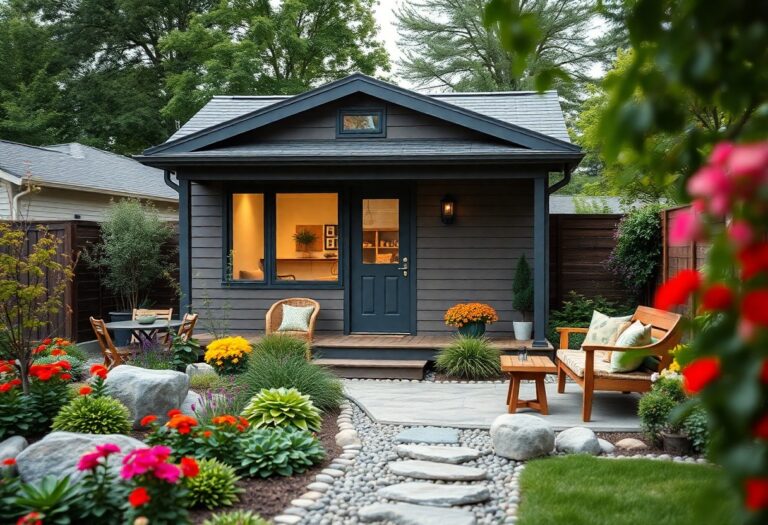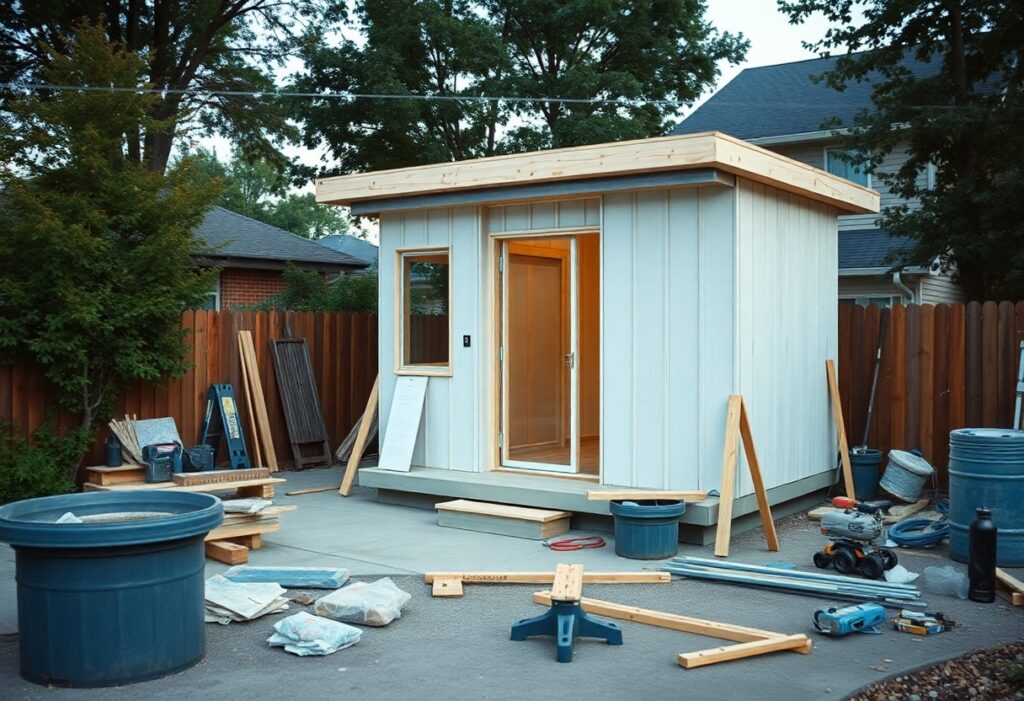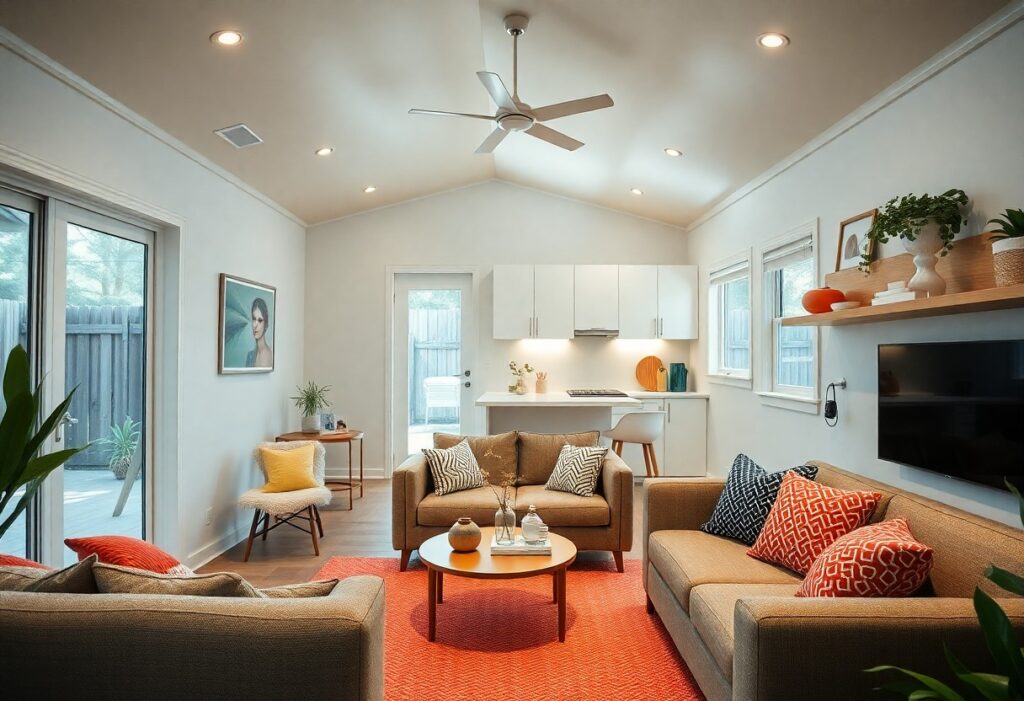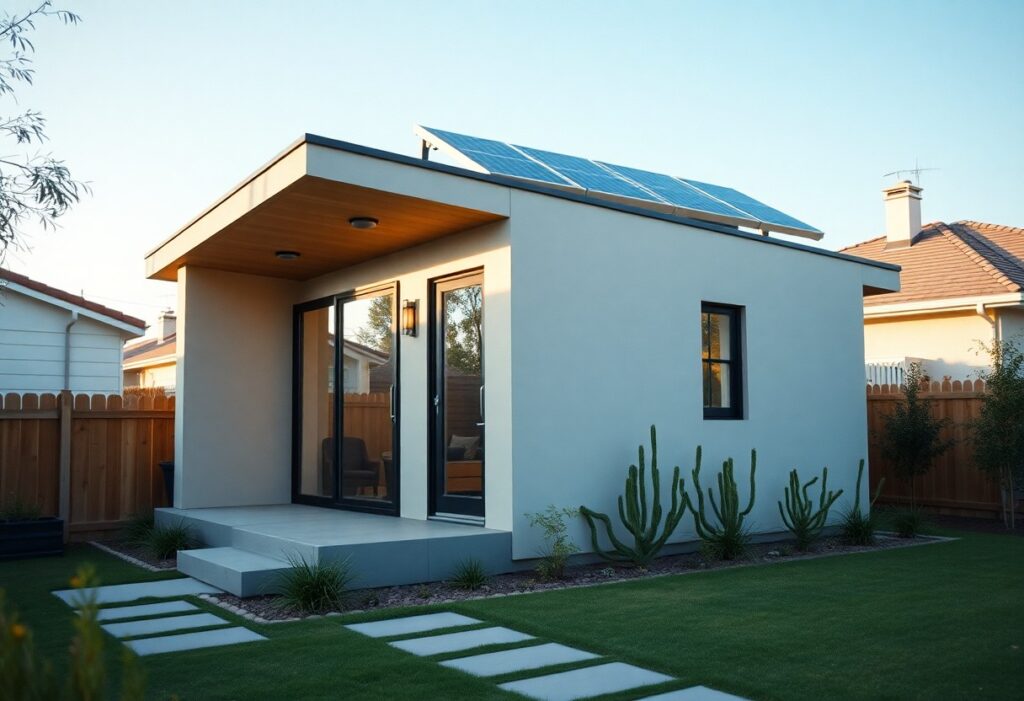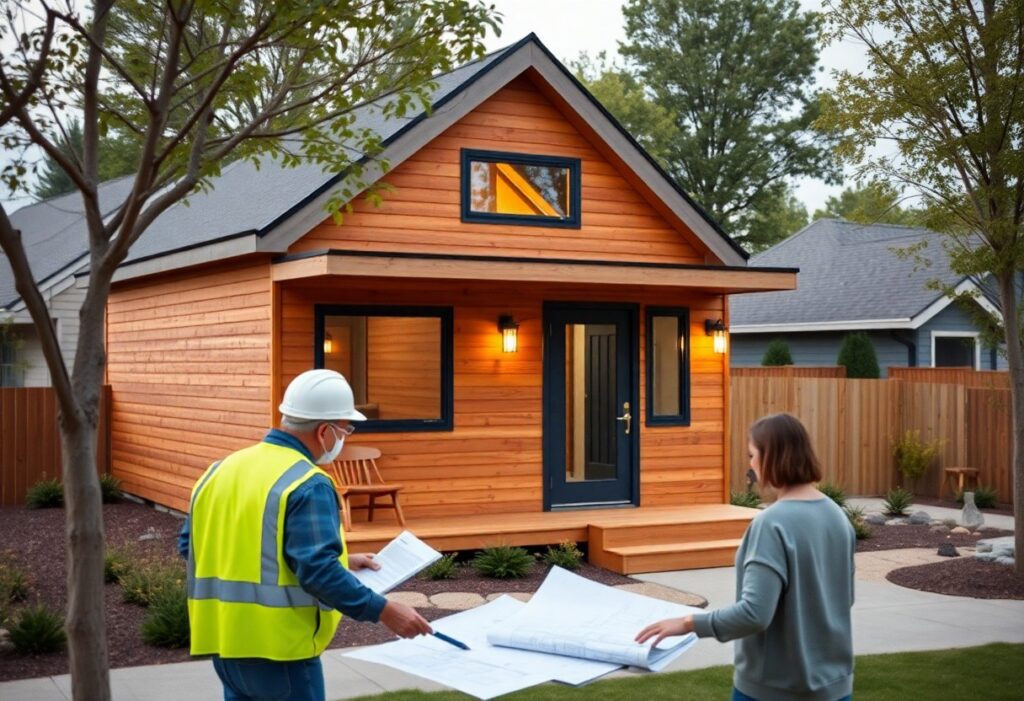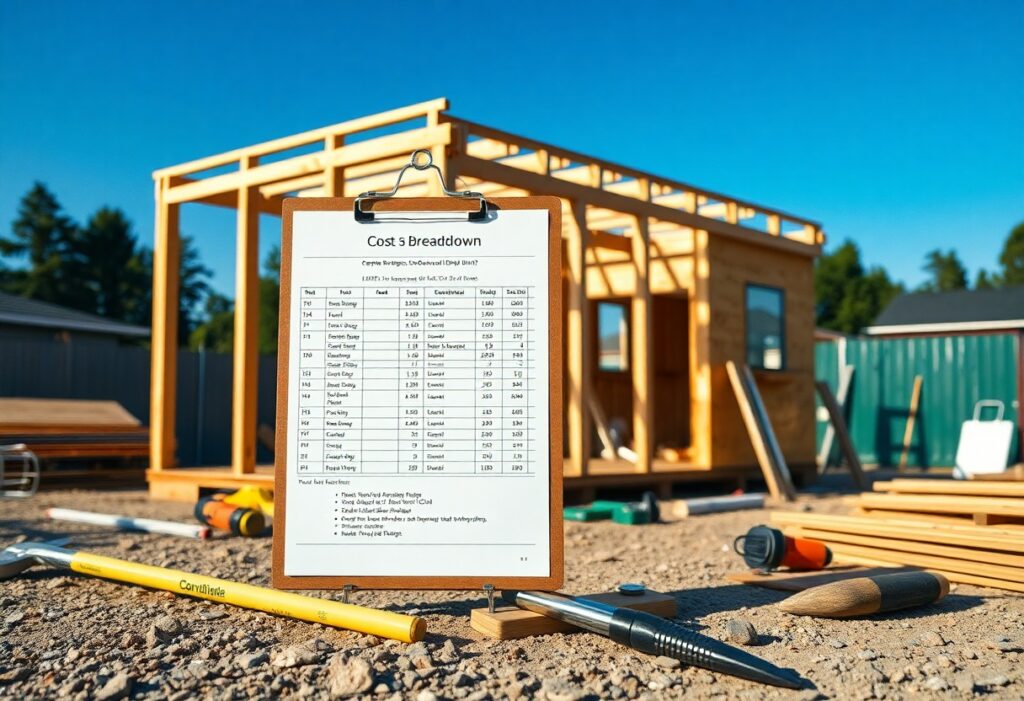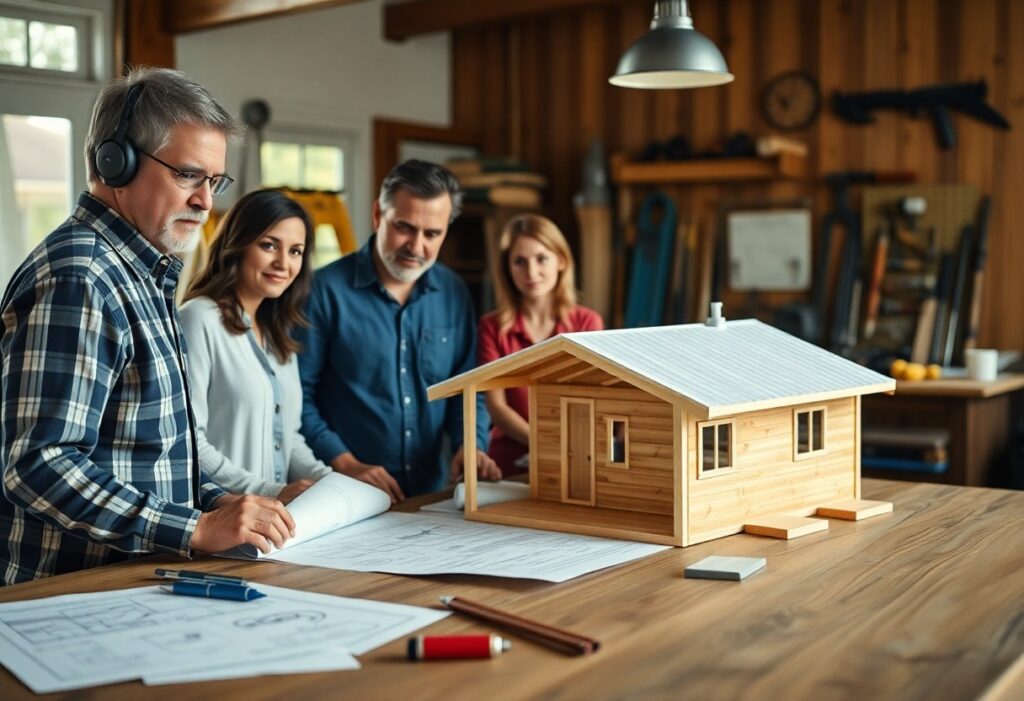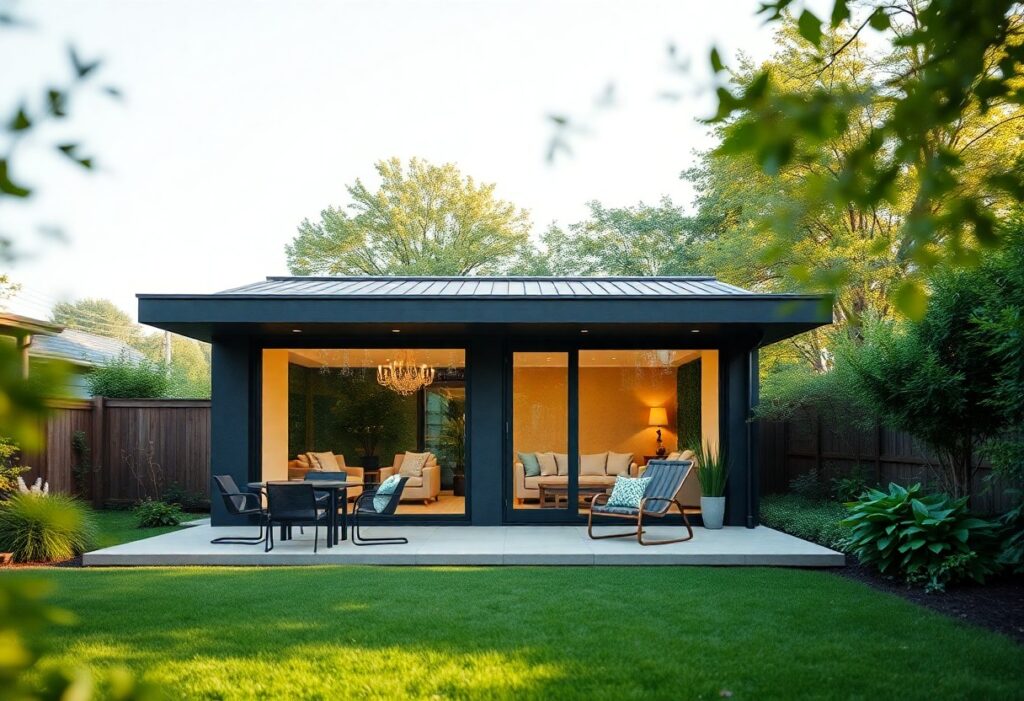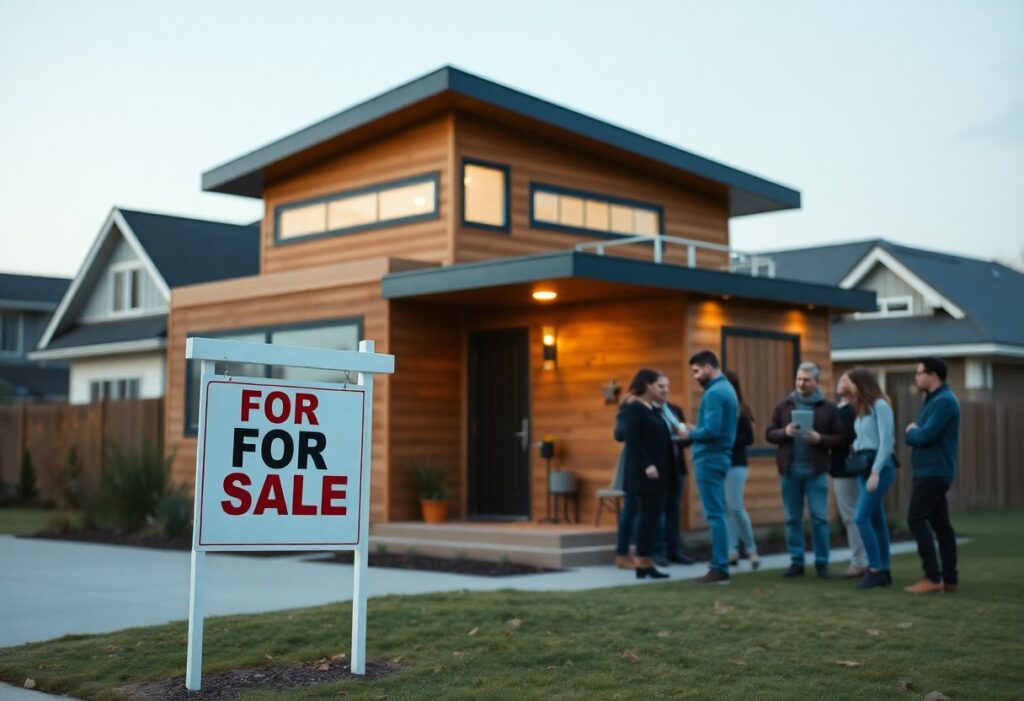Many homeowners exploring the potential of Accessory Dwelling Units (ADUs) may not realize the impact that effective landscape design can have on enhancing functionality and aesthetics. By thoughtfully addressing space constraints and selecting the right plants, you can create a welcoming outdoor environment that complements your ADU. Additionally, investing in durable materials can help you avoid future maintenance challenges, making your outdoor area both beautiful and practical. This guide will provide you with vital insights to maximize your ADU’s landscape design, ensuring it is both visually appealing and useful for your needs.
Key Takeaways:
- Integration: Landscape design should harmonize with the existing site and architecture of the ADU.
- Functionality: Outdoor spaces need to serve practical purposes, such as providing entry points and areas for relaxation or recreation.
- Privacy: Use plantings and design features to create private areas, shielding the ADU from neighbors and public views.
- Sustainability: Incorporate native plants and xeriscaping techniques to minimize water usage and enhance biodiversity.
- Accessibility: Ensure that pathways and outdoor areas are easily navigable for all users, including those with mobility challenges.
- Visual Appeal: Employ a variety of textures, colors, and vertical elements to create aesthetically pleasing outdoor spaces.
- Maintenance: Select low-maintenance plants and materials to reduce the upkeep needs over time.
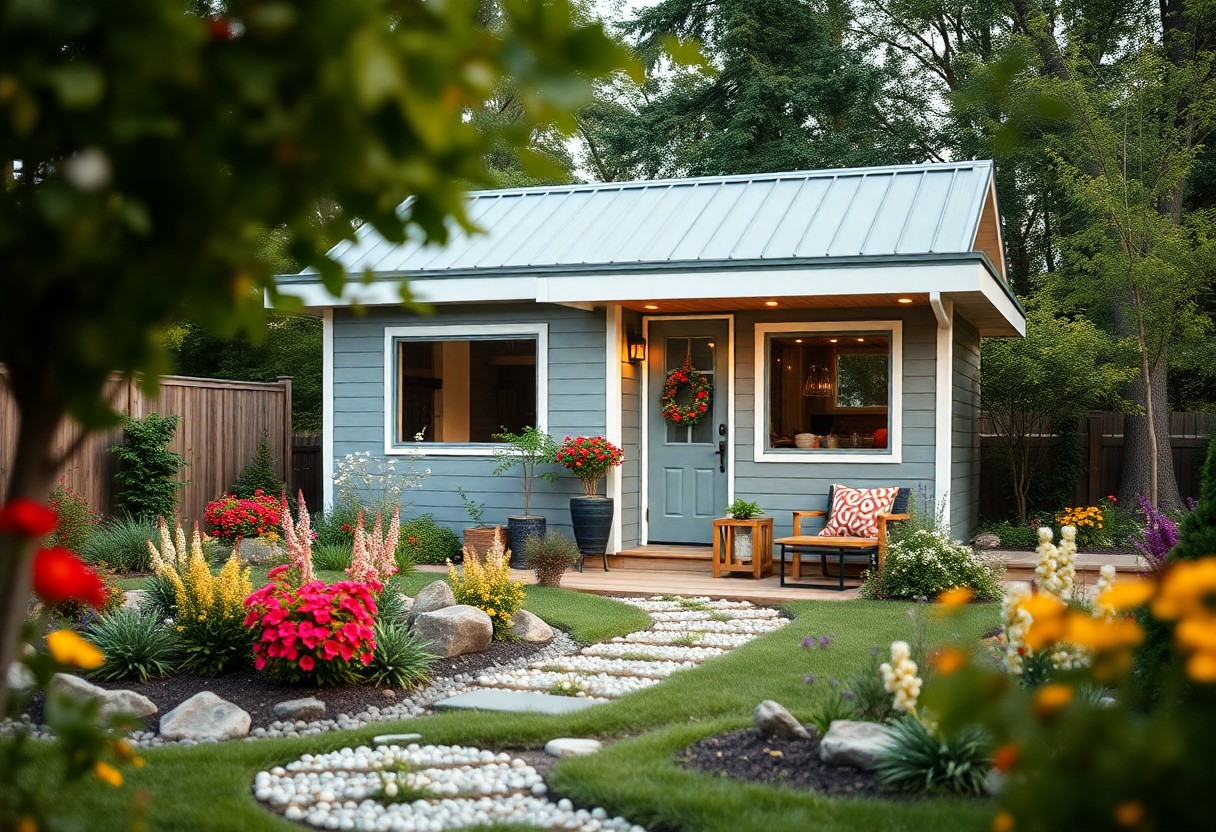
Understanding ADUs
Accessory Dwelling Units (ADUs) are becoming increasingly popular in residential areas, providing homeowners with additional living space and generating rental income. ADUs can serve various purposes, from housing family members to accommodating short-term rentals. Understanding these units is important for effective landscape design that complements your property.
Definition and Types of ADUs
The following table outlines the key definitions and types of ADUs:
| Definition | An independent living space on the same property as a primary residence. |
| Detached ADU | A separate structure, like a small house or cottage. |
| Attached ADU | A living unit attached to the primary home, often converted from a garage. |
| Convertable Space | Repurposing existing spaces, such as basements or attics, into livable units. |
| Tiny Home | A compact unit designed for efficient living, often mobile. |
This variety of options makes ADUs highly adaptable to your needs.
Benefits of Accessory Dwelling Units
Any homeowner considering an ADU can enjoy a range of benefits, from increased property value to additional income opportunities. ADUs can provide housing for family members, create rental income, and enhance your property’s market appeal.
Due to the rising demand for accessible housing options, ADUs offer a unique solution for maximizing your property’s potential. You can create a fashionable and functional living space while also increasing your property value. Investing in an ADU can lead to lucrative rental income opportunities and provide important housing for aging relatives or young adults. Furthermore, by enhancing your home’s functionality, you contribute to a more resilient community, addressing housing shortages while increasing your overall investment in your property.
Key Principles of Landscape Design
While designing the landscape for your ADU, it’s necessary to consider key principles that enhance both functionality and visual appeal. These principles can transform your space into a vibrant area that not only meets your needs but also adds value to your property. For inspiration, check out this Full Yard and ADU Landscaping Create a Family-Friendly … project, showcasing how thoughtful design can blend aesthetics and practicality.
Functionality and Aesthetics
To create a successful landscape for your ADU, focus on the integration of functionality and aesthetics. This means designing spaces that serve clear purposes—like entertainment areas, gardens, or pathways—while also ensuring they are visually appealing. Consider the use of native plants, furnishings, and structures that enhance the overall environment and meet your lifestyle needs.
Sustainability in Landscape Choices
At the forefront of modern landscape design is sustainability. Opting for eco-friendly materials and practices not only reduces your environmental impact but also creates a healthier living space. Implementing native plants, rainwater harvesting, and organic gardening practices can lead to a beautiful landscape that requires less maintenance and resources.
Principles of sustainability in landscape design emphasize designing spaces that benefit both you and the environment. By choosing native plants, you significantly reduce water usage and promote local biodiversity. Implement features like rain gardens or permeable paving to manage stormwater effectively. Additionally, incorporate edible landscaping or composting systems to create a productive environment while minimizing waste. Embracing these sustainable practices not only ensures a thriving ecosystem but also contributes positively to your property’s long-term value.
Assessing Your Site
Keep in mind that before venturing into landscape design for your ADU, you need to thoroughly assess your site. This involves analyzing factors like topography, existing vegetation, drainage patterns, and any local regulations. Understanding these elements will help you create a cohesive and functional outdoor space that complements your ADU while enhancing its overall appeal.
Evaluating Space Constraints
One of the first steps in your assessment is to evaluate the space constraints of your property. Take note of any limitations, such as the proximity of neighboring structures, zoning guidelines, and required setbacks. This will enable you to maximize the functionality of your ADU’s landscape while ensuring compliance with local regulations.
Considerations for Climate and Environment
Across different geographical locations, the climate and environment will significantly influence your landscape design choices. Consider how factors such as temperature, rainfall, and sunlight exposure will affect plant selection, irrigation needs, and outdoor usage.
The climate surrounding your ADU plays a vital role in selecting suitable plants and landscaping materials. For instance, in a hot climate, you might prioritize drought-resistant plants to conserve water, while in a rainy environment, you’ll want to consider drainage and moisture-loving plants. Additionally, the orientation of your ADU can impact sunlight exposure. Understanding these environmental factors will guide you in creating a sustainable and aesthetically pleasing landscape that thrives in your specific conditions.
Creating Outdoor Spaces
Your outdoor space should reflect your personality while providing comfort and utility. Thoughtful landscape design enhances the appeal of your ADU, creating areas for relaxation, entertainment, and interaction with nature. By integrating various elements, such as seating, planters, and lighting features, you can transform your yard into an inviting retreat that complements your lifestyle.
Pathways and Accessibility
Beside functionality, pathways are important for accessibility throughout your outdoor space. They guide visitors through your landscape while ensuring easy navigation for everyone, including those with mobility challenges. By using durable materials and thoughtful designs, you can create clear and inviting routes that connect different areas of your yard, ultimately enhancing the overall experience.
Plant Selection and Placement
Across your outdoor space, selecting the right plants is vital for achieving a cohesive aesthetic while catering to the local climate. Consider native plants that will thrive with minimal care, attracting wildlife and promoting biodiversity. Layering plants with varying heights and textures adds visual interest, while strategically placing evergreens can provide year-round greenery. Use flowers that bloom at different seasons for vibrant colors throughout the year, ensuring your landscape remains dynamic and lively.
And as you think about plant selection and placement, it’s important to consider sunlight exposure, soil type, and water availability. Opt for plants with complementary colors and growth habits to create a harmonious garden. Additionally, be mindful of potential invasive species that might disrupt local ecosystems. Using a mix of deciduous and perennial plants contributes to a dynamic landscape, offering seasonal changes that enhance your outdoor environment while promoting sustainability and low maintenance.
Enhancing Outdoor Privacy
For homeowners seeking to enhance privacy in their Accessory Dwelling Units (ADUs), thoughtful landscape design plays a pivotal role. By strategically incorporating elements like fencing, plants, and architectural features, you can create serene outdoor spaces that shield your home from prying eyes, allowing you to enjoy the outdoors in peace. The right blend of greenery and structure not only enhances your property’s aesthetics but also establishes comfortable zones for relaxation and leisure.
Fencing and Natural Barriers
On your journey to enhance privacy, consider installing a combination of fencing and natural barriers. Fences made of wood or vinyl can offer a solid visual block, while dense shrubs and trees serve as living screens. Choose plants that grow tall quickly to maximize coverage and create a lush, secluded atmosphere. This dual approach provides an attractive boundary and promotes biodiversity in your landscape.
Landscaping for Sound Reduction
Enhancing your outdoor space for sound reduction involves incorporating elements that absorb and deflect noise. Utilize dense, layered plantings like evergreens, hedges, and ground cover to create a barrier against unwanted sound. Adding water features can also buffer noise, offering a soothing ambiance to your ADU environment. With thoughtful planning, your landscape can become a tranquil refuge, making your outdoor experience much more enjoyable.
Sound is often overlooked when designing your outdoor spaces, but it significantly impacts your living environment. By choosing plants with dense foliage, such as arborvitae or boxwood, you can create natural sound barriers that absorb and diffuse noise. Incorporating features such as stone walls, raised beds, or even strategically placed boulders can also help redirect sound waves away from your ADU. Implementing these landscaping techniques not only creates a quieter space for relaxation but also enhances the overall feel of your outdoor area.
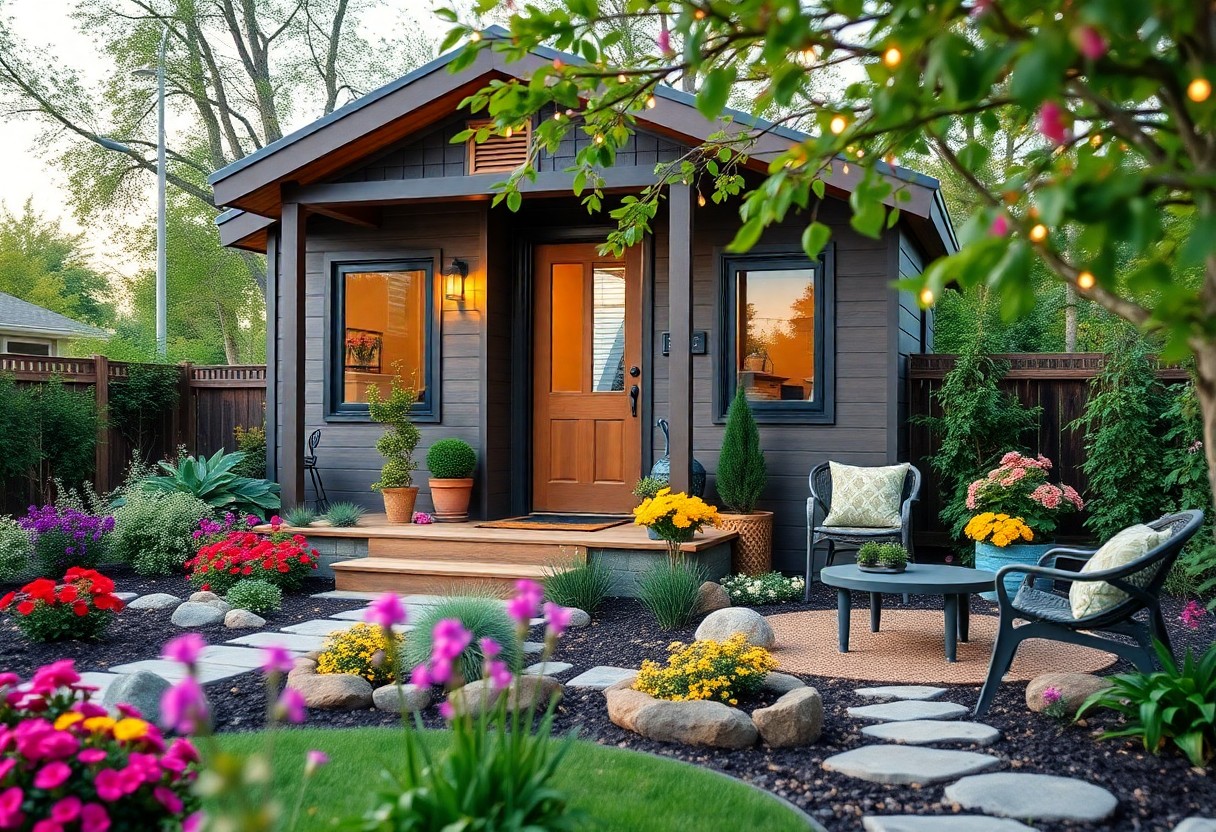
Maintenance Considerations
Despite the appeal of beautiful landscapes around your ADU, maintenance is key to keeping it thriving. Opt for ADU Landscaping choices that reduce upkeep without sacrificing aesthetics. Plan your gardens and hardscapes to ensure they complement your lifestyle and are easy to maintain over time.
Low-Maintenance Landscape Options
Maintenance needs can significantly impact your enjoyment of your ADU’s outdoor space. Consider native plants, rock gardens, and permeable paving for easier upkeep. These options require minimal watering and mowing, giving you more time to enjoy your garden rather than labor over it. Perceiving your landscape as a long-term investment in your quality of life can guide your design choices.
Seasonal Care Tips
With changing seasons, your landscape will require different levels of attention. Regular pruning, mulching, and watering can help maintain the health of your plants. During spring, ensure your landscape is ready to bloom, while in fall, prepare for winter hibernation. Focus on understanding the unique needs of your landscape through each season. Perceiving these changes allows you to adapt your care routine effectively.
Understanding your landscape’s seasonal care needs is paramount for its longevity and beauty. Regular tasks include monitoring for pests, adjusting watering based on weather conditions, and performing necessary fertilization. Ensure you are also aware of the potential risks of extreme weather conditions. This knowledge fosters proactive management of your landscape, allowing you to enjoy it worry-free. Perceiving these factors will help maintain a healthy and vibrant outdoor space surrounding your ADU.
1. Prioritize functionality for outdoor spaces near ADUs.
2. Choose plants that thrive in local climate conditions.
3. Integrate privacy features like hedges or trellises.
4. Use pathways to connect ADU to main property.
5. Consider lighting for security and ambiance.
6. Maintain harmony with existing landscape elements.
Summing up
Conclusively, landscape design for ADUs enhances not only the beauty and functionality of your space but also increases property value. By thoughtfully incorporating elements like native plants, sustainable materials, and inviting outdoor areas, you can create an aesthetically pleasing environment that complements your main residence. Pay attention to your local climate and landscape to ensure your design is practical as well as attractive. With careful planning, your ADU landscape can be a harmonious extension of your home, providing both enjoyment and utility for years to come.
FAQ
Q: What is an ADU?
A: An ADU, or Accessory Dwelling Unit, is a secondary housing unit on a single-family lot. These units can serve various purposes, from guest houses to rental properties, and are typically smaller than the primary residence.
Q: How can landscape design enhance the appearance of an ADU?
A: Thoughtful landscape design can significantly improve the aesthetic appeal of an ADU. By incorporating plants, pathways, and outdoor living spaces, the ADU can seamlessly blend with the overall property and create an inviting atmosphere. Elements like lighting and seating areas also enhance its charm.
Q: What are some design considerations specific to landscaping an ADU?
A: When landscaping for an ADU, it is vital to consider the scale and proportion of the garden elements in relation to the unit. Additionally, privacy, access, and the maintenance requirements of the landscape should be evaluated to ensure it meets the needs of both the ADU residents and the primary home.
Q: How can I ensure privacy in my ADU landscape design?
A: To promote privacy in an ADU landscape, consider using taller plants or shrubs to create a natural barrier. Decorative fences, trellises with climbing plants, and strategically placed hardscapes can also help shield the ADU from view while enhancing design.
Q: What are some recommended plants for an ADU landscape?
A: The selection of plants will depend on your climate, soil conditions, and personal taste. However, low-maintenance choices such as ornamental grasses, native plants, and evergreens can be a great option. These plants often require less water and care, making them suitable for an ADU setting.
Q: Can landscaping for an ADU include outdoor living spaces?
A: Yes, incorporating outdoor living spaces such as patios, decks, and fire pits can greatly enhance the functionality of an ADU. These areas can serve as extensions of the living space, providing residents with areas to relax, entertain, or enjoy meals outdoors.
Q: What role does hardscaping play in landscape design for ADUs?
A: Hardscaping refers to the non-plant elements of landscape design, such as pathways, retaining walls, and patios. In an ADU landscape, hardscaping is vital for creating access points, managing water drainage, and establishing defined outdoor spaces, all while adding to the overall aesthetic and functionality.

